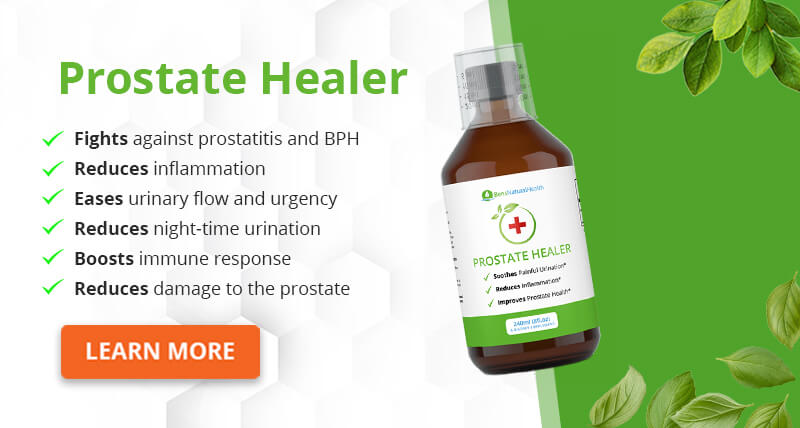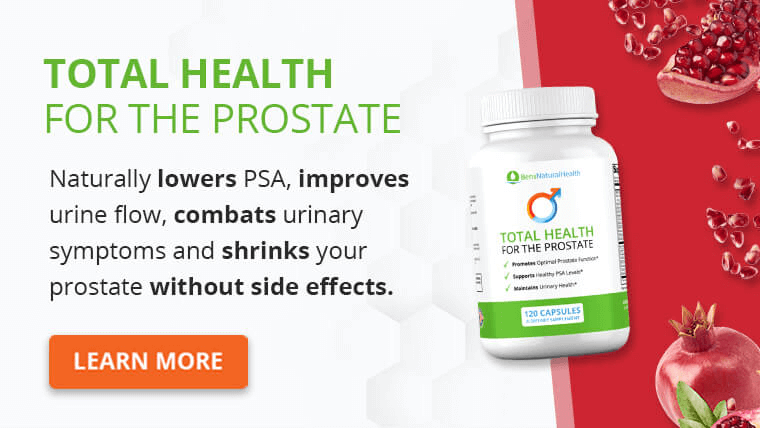Pelvic pain can be a frustrating and embarrassing condition, manifesting in different ways in men and women.
Every year, about 25% of women suffer from pelvic pain. The estimates for men are at 15%, with some having frequent pain.
This blog post will look at the causes of pelvic pain in both sexes, from endometriosis and ovarian cysts to prostatitis and hernia.
We’ll also explore some available treatments, from medication to surgery. Let’s dive in.
What is pelvic pain?
Pelvic pain occurs in the pelvic or lower abdominal area, including the area below the waistline and between the hip bones. The pelvic area consists of the uterus, bladder, small intestine, and rectum.
Often, the pain doesn’t signify anything life-threatening. Other times though, it could be a symptom of an underlying or advancing ailment, such as endometriosis or irritable bowel syndrome (IBS). Consult with your doctor when you experience such discomfort.
There are different reasons a person might experience pelvic pain, and the cause can be challenging to determine.
For example, a problem with any of the organs in the pelvic area or the muscles and tissues surrounding them may cause pain in the pelvic area. In addition, problems with the nerves and blood vessels can also cause pelvic pain. [1,2]
What does pelvic pain feel like?
Pelvic pain can manifest in different ways for different people. Some people may experience a sharp pain that comes and goes, stabbing pain, while others may feel a more general, diffuse pain.
Some common symptoms of pelvic pain include:
- Pain in the lower abdomen
- Pain during sex
- A feeling of pressure in the pelvis
- Pain during urination or bowel movements
- Pain in the hips or buttocks
- Heaviness in the pelvic area
What causes pelvic pain in men?
There are many causes of pelvic pain in men. Some medical conditions may have pelvic pain as a symptom. They include:
1) Urinary tract infection (UTI)
A UTI is a bacterial infection that occurs somewhere in or around the urinary tract, comprising the urethra, bladder, ureters, and kidneys.
2) Sexually transmitted infection (STI)
Other causes of pelvic pain are STIs, such as chlamydia and gonorrhea. It is estimated that almost 3 million chlamydia infections occur in the U.S. each year, and gonorrhea infects about 820,000 people annually.
3) Prostatitis
Prostatitis is inflammation of the prostate, a small gland in the male reproductive system. They can cause pain in the pelvis, groin, or lower back.

4) Hernia
A hernia is a minor painful swelling that develops when a piece of tissue or intestine pushes out through a weak point in the muscles. Pain from a hernia may worsen with strenuous activity.
5) Irritable bowel syndrome (IBS)
Irritable bowel syndrome (IBS) is a gut or intestinal disorder and a common condition that affects the digestive system. It results in symptoms like stomach cramps, diarrhea, and constipation. It’s usually a lifelong problem.
6. Appendicitis
Appendicitis is inflammation of the appendix, a small organ in the lower right abdomen. It usually causes pain in the middle of your tummy before moving towards the more down right side.
Appendicitis begins with a pain in the middle of your belly (abdomen) that may come and go. Within hours, the pain travels to the lower right-hand side, where the appendix lies, and becomes constant and severe. Pressing on this area may worsen the pain.
7. Urinary stones
Kidney stones form due to salt or mineral build-up in the urine, such as calcium. They clump together and crystallize into urinary stones.
8. Cystitis
Cystitis is inflammation in the bladder, usually from a bacterial infection getting into your bladder. Common symptoms of cystitis include pain when peeing, needing to pee more often, and pain low down in your tummy. Cystitis may get better by itself in a few days.
9. Urethral stricture
Urethral stricture develops when the urethra becomes blocked or narrowed, making it difficult for urine to flow through freely.
10. Benign prostatic hyperplasia (BPH)
BPH develops when the prostate gland enlarges and expands. This causes pain in the pelvis and discomfort when passing out urine.

What causes pelvic pain in women?
Some common and rare causes of pelvic pain in women include:
1) Menstrual pain and cramps
Menstrual cramping is a common cause of pelvic pain. It typically occurs immediately before a person starts their period, as the uterus contracts and sheds its lining. The pain is usually similar to a muscle spasm or a jabbing pain.
2) Ovulation
A person ovulates when the ovaries release an egg and another fluid. The egg travels down the fallopian tube and into the uterus.
The liquid released by the ovary can also enter the abdominal cavity and pelvis, which can cause irritation and discomfort, which may last for a few minutes or hours.
3) Interstitial cystitis
Interstitial cystitis is an ongoing bladder inflammation with no known cause. This can cause pelvic pain and symptoms such as painful urination, needing to urinate frequently, and pain during sex.
4) Pelvic inflammatory disease
Pelvic inflammatory disease (PID) is an infection in the womb that can damage the surrounding tissue. For example, PID can arise if bacteria from the vagina or cervix enter the womb (uterus) and take hold.
5) Endometriosis
It’s not clear what causes endometriosis. However, endometriosis is a condition where tissue similar to the womb’s lining starts to grow in other places, such as the ovaries and fallopian tubes.
Endometriosis can affect women of any age. It’s a long-term condition that can significantly impact lives, but some treatments can help.
6) Ectopic pregnancy
An ectopic pregnancy occurs when an embryo implants itself anywhere outside the uterus and grows.
The following conditions have been linked with an ectopic pregnancy: inflammation and scarring of the fallopian tubes from a previous medical disease, infection, past surgery, or hormonal factors. It can go undiagnosed for 6 and 16 weeks. However, the fallopian tube will rupture if not diagnosed in time.
7) Ovarian cysts
Ovarian cysts occur when the ovaries cannot release an egg. Instead, a growth called a cyst forms in the area, which may cause bloating, pressure, or pelvic pain on the side of the body with the cyst.
8) Uterine fibroids
Fibroids are lumps of muscle and fibrous tissue within the uterus. Depending on the type of fibroid, it may cause discomfort in the pelvis or lower back or pain during sex. Also, some fibroids tend to cause excessive bleeding, cramping, or both during menstruation.
9) Tumor
In rare cases, growth in the reproductive system, urinary tract, or gastrointestinal system may be the reason for pelvic pain. The tumor may also cause other symptoms, depending on where it appears.
10) Urinary stones
Kidney stones can develop in 1 or both kidneys and most often affect people aged 30 to 60. They’re pretty standard, with more than 1 in 10 people involved.
Bladder stones are hard lumps of minerals that can form inside the bladder when not empty of urine. They may not cause symptoms if they’re small enough.
11) Others
As mentioned above, some conditions affect men and women and cause pelvic pains. For example, cystitis, urinary tract infections, sexually transmitted infections, irritable bowel syndrome, appendicitis, and urinary stones can affect men and women equally.
When should you see your doctor for pelvic pain?
Most people have experienced pelvic pain at one point: some feel it more regularly than others, and it can be normal to feel pelvic pain.
You should reach out to your doctor for pelvic pain in these instances:
- Urinary or fecal incontinence problem
- Pelvic pain that lasts for more than a month, even after you’ve tried self-care measures
- Pain is interfering with your ability to work or take care of others
- You are seven months pregnant or decide to become pregnant
- You notice blood in urine or stool
- Lump or mass in the pelvis
- Pain in a specific location (i.e., the crest of public bone, ribs)
- Pain during intercourse
- Intense, frequent, and prolonged pelvic pain
- Nausea and vomiting
- Diarrhea or constipation
- Pain in the hip and groin area
- Fever and chills
- Bloating and gas
- For young women and sexually active teens, when they have had abdominal or pelvic pain that has lasted over three months. [1, 2]
There is a misconception that pelvic pain is simply in the mind and could be because of emotional trauma or stress. However, pelvic pain is genuine, so you need to seek medical attention from your doctor, who will determine the cause of your pain and make the proper diagnosis.
Get Your FREE PSA Lowering Diet Plan!
- Naturally lower PSA levels
- Reduce nighttime trips to the bathroom
- Enjoy better bladder control and urine flow
What treatment options are available for pelvic pain?
There are several treatment options for pelvic pain. The cause of your pelvic pain will determine which treatment your doctor will recommend for your condition. [3]
1) Medications
- Pain medication such as aspirin, ibuprofen, and acetaminophen. However, pain relievers alone rarely combat chronic pelvic pain.
- Hormone treatments are an option when pelvic pain is associated with the menstrual cycle or ovulation. Medications like birth control or other hormonal medication may relieve pain.
- Antibiotics for infections.
- Antidepressants: Tricyclic antidepressants, such as amitriptyline and nortriptyline, have pain-relieving and antidepressant effects. They may help ease chronic pelvic pain, even in individuals who don’t have depression.
2) Therapy
- Physical therapy includes massage, stretching exercises, and other relaxation techniques.
- Neurostimulation (spinal cord stimulation) is a treatment involving the implantation of a device that blocks nerve pathways so that the pain signal can’t reach the brain. It is helpful, depending on the cause of your pelvic pain.
- Trigger point injections involve injecting numbing medicine into the painful spots (trigger points). Thus, it can block pain and ease discomfort.
- Psychotherapy. Psychotherapy can help you develop strategies for coping with the pain, regardless of the cause of your pelvic pain.
3) Surgery
- Laparoscopic surgery. If the cause of pelvic pain is endometriosis, then doctors can remove affected tissue using this technique.
- Hysterectomy surgery is for rare cases and involves the removal of the uterus and sometimes the fallopian tubes or ovaries.
- Pain rehabilitation programs.
Get your FREE bladder diary
- Daily bladder diary
- Better understand your urinary symptoms
- Step-by-step guide
How to relieve pelvic pain
Besides seeing your doctor, there are a few simple ways to help alleviate your symptoms if you are experiencing pelvic pain. Follow this guide and keep yourself feeling good. Combining these methods with medical intervention should give you the relief you need. [3]
Home remedies
Most times, simple home remedies can help ease some of the pain. Home remedies to get relief include:
- Applying a heating pad or warm compress on the pelvic area or sit in a bathtub filled with warm water.
- Resting with legs inclined upwards improves the flow of blood to the pelvis.
- Engaging in light exercises or stretching. Light exercises improve blood flow and promote the release of natural painkillers called endorphins.
- Taking over-the-counter pain relievers.
Diet
Diet also plays a crucial role in improving or aggravating pelvic pain. Although further research is required to understand the connection between certain foods or habits with the improvement or worsening of this condition, the following factors may negatively influence pelvic pain, primarily caused by endometriosis:
- Diet high in trans and saturated fat and processed foods like crackers, cookies, pastries, and more
- Red meat such as beef, pork, and veal
- Gluten
- Alcohol
- Caffeine
Foods that positively impact chronic pelvic pain, primarily caused by endometriosis, include:
- Fibrous foods (fruits, vegetables, legumes, brown rice, quinoa, buckwheat, steel-cut oats, etc.)
- Iron-rich foods (dark leafy greens such as spinach, kale, collard greens, cruciferous veggies such as cauliflower, broccoli, Brussel sprouts, beets, berries, stone fruits such as peaches, nectarines, plums or prunes, apples, pears, broccoli, beans, lentils, chickpeas, black beans, fortified grains, nuts, and seeds)
- Foods rich in essential fatty acids and omega-3 (salmon, sardines, wild salmon, herring, sardines, black cod, herrings, trout, extra virgin olive oil, flaxseed oil, nut-based oils, walnuts, chia seeds, and flax seeds)
- Antioxidant-rich foods are found in colorful fruits and vegetables (oranges, berries, dark chocolate, spinach, and beets)
Supplements
In addition to a healthy diet, supplements are beneficial too. For example, vitamin D, vitamin E, and magnesium supplements can help to ease chronic pelvic pain.
For instance, the research involved 59 women with endometriosis who took 1,200 international units (IU) of vitamin E and 1,000 IU of vitamin C supplement. As a result, researchers here recorded a reduction in chronic pelvic pain and decreased inflammation. [4]
In another study, female participants with endometriosis took zinc and vitamins A, C, and E supplements. Researchers observed it decreased peripheral oxidative stress markers and enhanced antioxidant markers in women. [5]
Before you decide to take any nutritional supplements and herbs, consult with your doctor.
Conclusion
Pelvic pain is often not a cause for worry. Develop a healthy diet and lifestyle to alleviate symptoms. Contact your doctor immediately if symptoms worsen or are prolonged. Follow instructions from your physician.
Explore More








